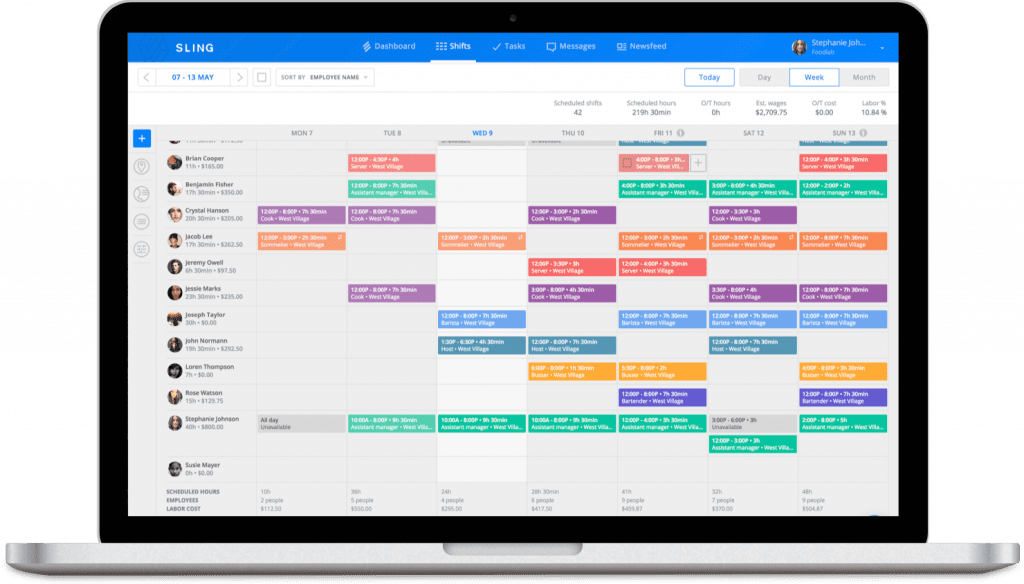Human Resource Planning: Definition, Objectives, And Steps
Human resource planning is an essential part of every successful business. Unfor...

Human capital management may sound like an impersonal process that your HR department uses once in a while without your business even noticing. But nothing could be further from the truth.
Human capital management is an extremely personal process that affects the happiness, focus, and engagement of your employees. What’s more, it is not simply a cost of doing business — it is, rather, a core business asset.
In this article, the workforce-management experts at Sling discuss the core components of human capital management so you can implement this essential process in your business.

To fully understand human capital management, we first have to step back and define the core concept in that process — human capital.
Human capital is an intangible asset that includes elements such as your team’s:
As we mentioned at the beginning of this article, human capital may sound like an impersonal concept, but when you look past the utilitarian moniker, you’ll see that it’s one of the most personal parts of your business.
Like other metrics in your business, you can measure human capital. And because you can measure it, you can also develop it to produce a return on investment.
That’s where human capital management comes in.

Human capital management (or HCM for short) is a set of practices and processes related to the acquisition, development, management, and organization of the human element — the human capital — within your business.
Though it might not seem as crucial as other areas such as sales, manufacturing, or vendor relationships, HCM permeates every corner of your business and has a dramatic effect on the way your company runs.
Businesses that implement human capital management initiatives — such as health and wellbeing programs, skill development, and career advancement — experience benefits at both the individual and the organizational level.

At first glance, human capital management may seem like human resource management under a different name.
But when you dig deeper and compare the two management processes, you’ll see that they focus on different aspects of your human capital.
The goal of human resource management (HRM) is to create and manage the systems and policies that enable employees to do their jobs.
Key responsibilities of HRM include such things as:
The goal of human capital management is to optimize and maximize the value and return on investment of the employees in your business.
Key responsibilities of HCM include such things as:
One of the simplest ways to think about human capital management versus human resource management is that HCM is a department within HRM that focuses on improving the skills, abilities, and work life of employees.

A strong HCM program starts with defining your business’s vision and values. These statements of purpose directly affect your business’s culture and employee behavior.
When you, as a manager or owner, have a firm grasp on your company’s vision and values, you’ll be better able to guide your human capital management efforts to success.
Strategy is another significant component of human capital management.
The strategies you implement at the organizational, corporate, and functional levels dictate what your business needs to do to improve the return on investment of its human capital.
For example, if one of your business strategies is to improve customer satisfaction by 20%, that goal drives your efforts at the functional level where your HCM team can institute practices to achieve it.
As in all aspects of your business, leadership plays a critical role in HCM efforts.
For larger businesses, senior leaders in the HR department will drive HCM initiatives (with input from other C-suite executives) and be responsible for putting the processes in place.
For smaller businesses, the CEO or COO may also wear the HCM hat and spearhead your organization’s efforts to improve the way your team works.
The driving force behind successful HCM is data.
Those making the decisions on what to do and what not to do need as much information as possible to manage, take action on, and measure the results of the programs they put in place.
As such, they need workforce metrics including:
With this information in hand, HCM leadership will be well equipped to implement policies that are directly in line with your business strategy, vision, and values.

One key benefit of human capital management is that your business will be better equipped to attract and retain high-quality talent.
With an effective HCM plan in place, your business can:
With human capital management, your business can identify and control key spending variables that will help you save money over the long-term.
For example, with data from your HCM initiatives, your business will gain insight into how to:
Even if your HCM program is in its infancy, the results of controlling your labor spending will have a direct effect on your bottom line.
Agility is something every business strives for.
With HCM, your business can anticipate workforce attrition, adjust in a rapid and organized manner to changes both inside and outside your business, and accommodate the unique needs of your changing workforce.

As a process within your business, human capital management rests on a foundation of four key elements:
In the past, managers, owners, and human resource professionals performed these activities with nothing more than pencil and paper.
But this is the 21st century and nothing streamlines HCM like software. And the best software for managing and optimizing your workforce? The Sling app.
Sling is a suite of integrated tools that makes scheduling, tracking labor, putting together payroll, finding substitutes, assigning tasks, and keeping everyone informed extremely simple.
And that’s just the beginning of what Sling can do.
For an all-in-one solution to help you improve your human capital management — and every part of your business — incorporate the Sling suite of tools into your workflow.
Features include:
Add to that Sling’s onboard artificial intelligence and you’ve got an extremely powerful and flexible set of tools that will help you streamline your HCM for the better — not to mention manage your team, increase morale, and improve the way they work.
There are so many ways Sling can help improve the way your business runs that we don’t have room to talk about them here. So instead of reading about it, why not try it out?
Sign up for a free account and see for yourself how Sling can help you implement and maintain a human capital management program.
For more free resources to help you run your business better, organize and schedule your team, and track and calculate labor costs, visit GetSling.com today.
See Here For Last Updated Dates: Link
This content is for informational purposes and is not intended as legal, tax, HR, or any other professional advice. Please contact an attorney or other professional for specific advice.
Schedule faster, communicate better, get things done.